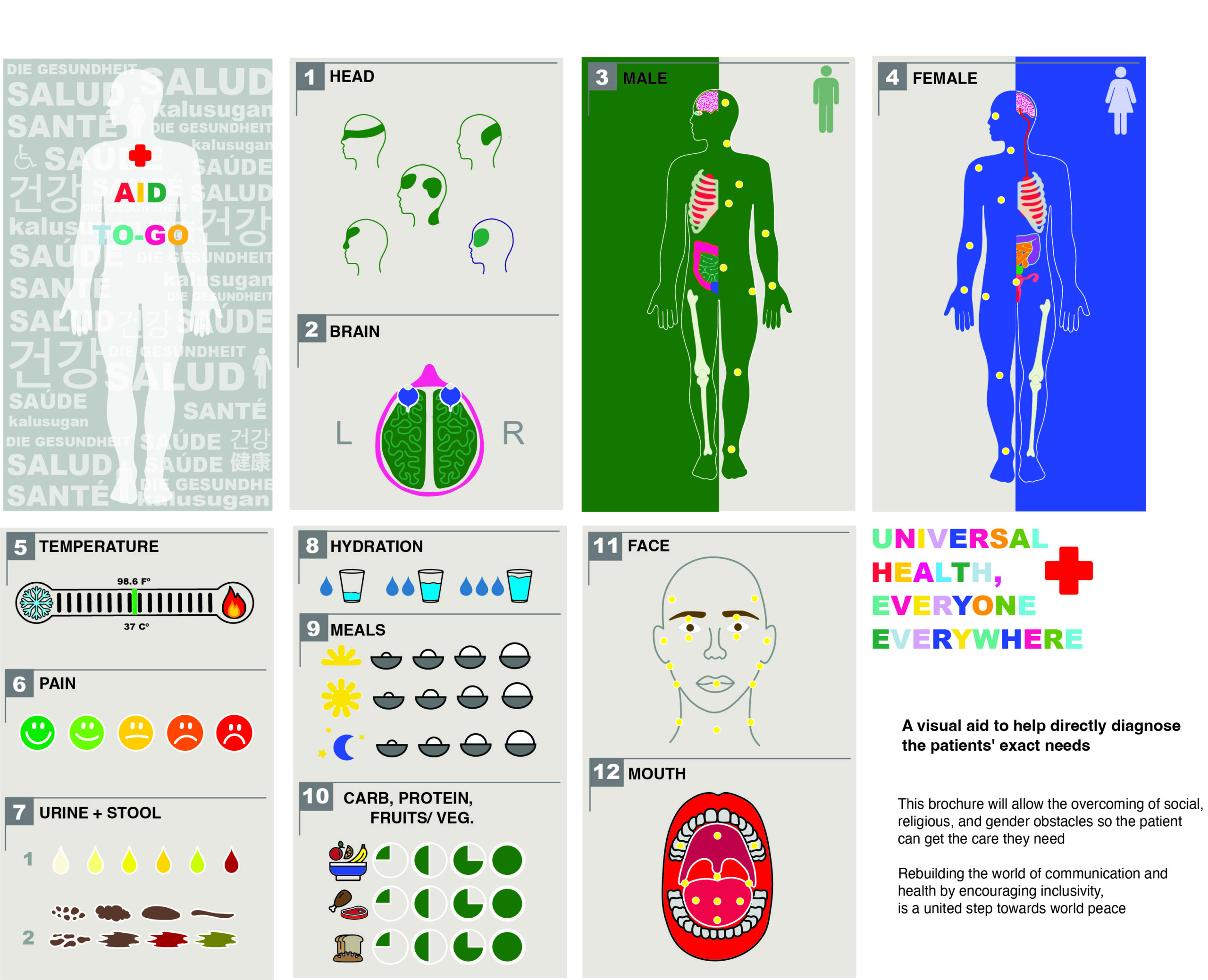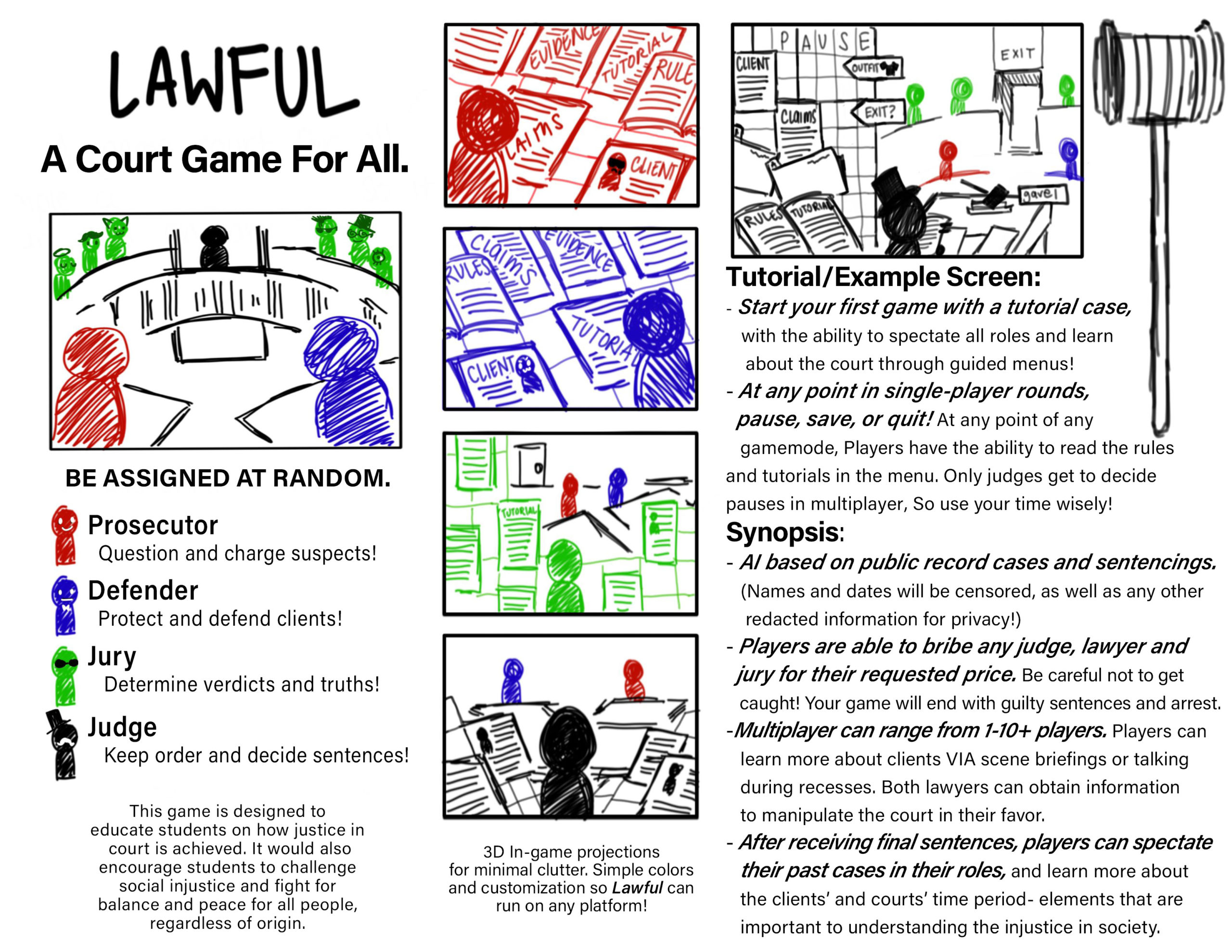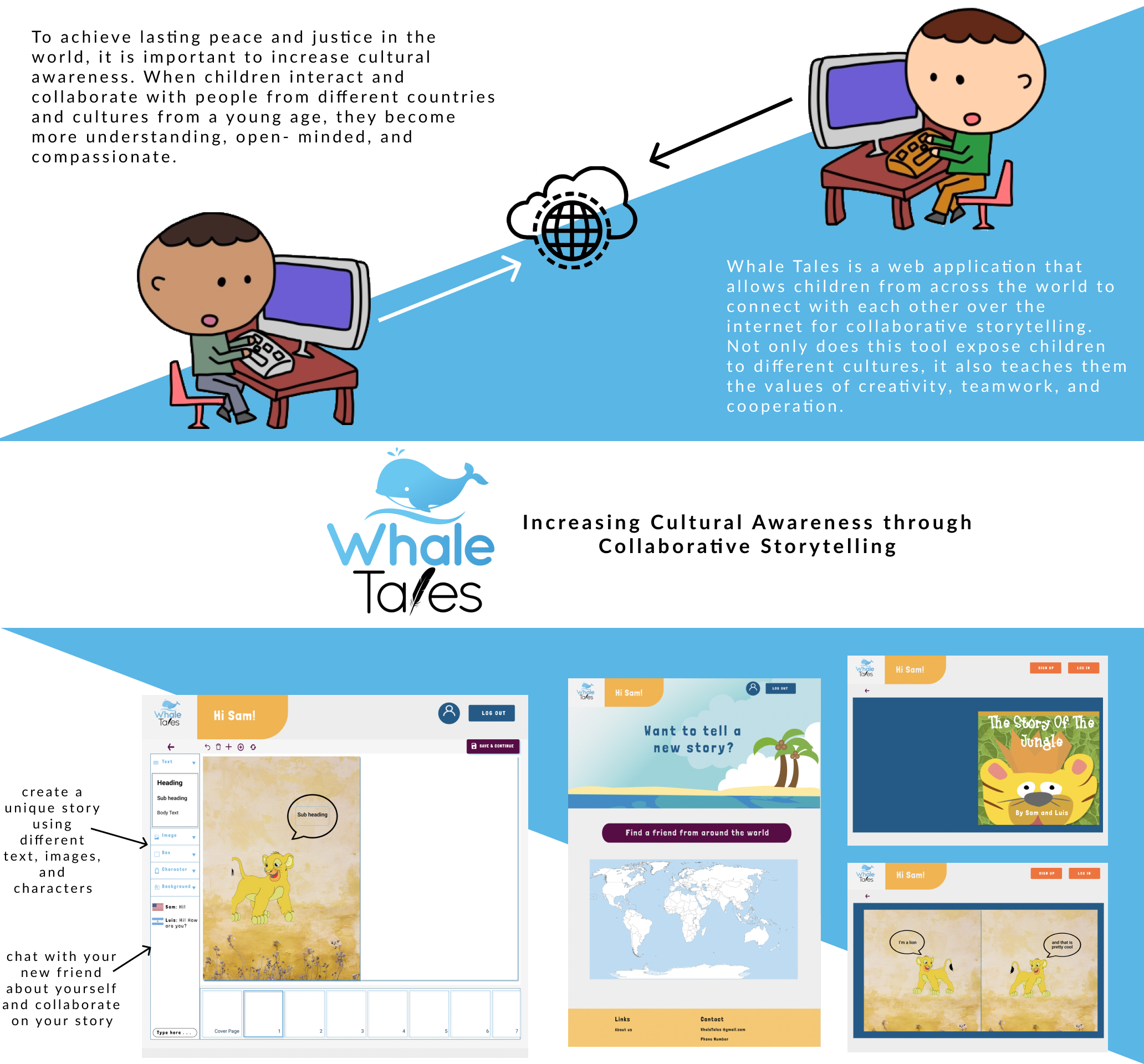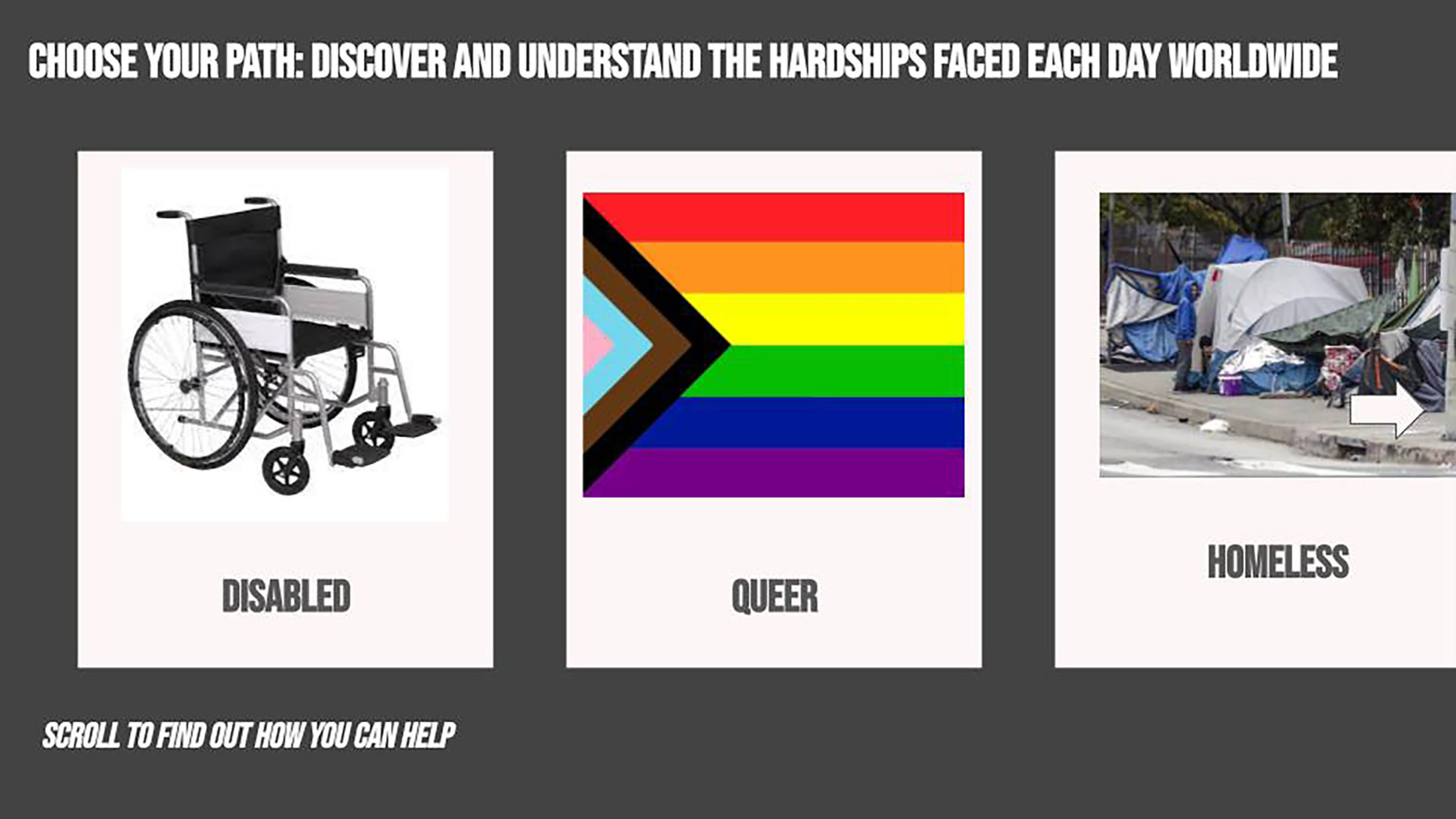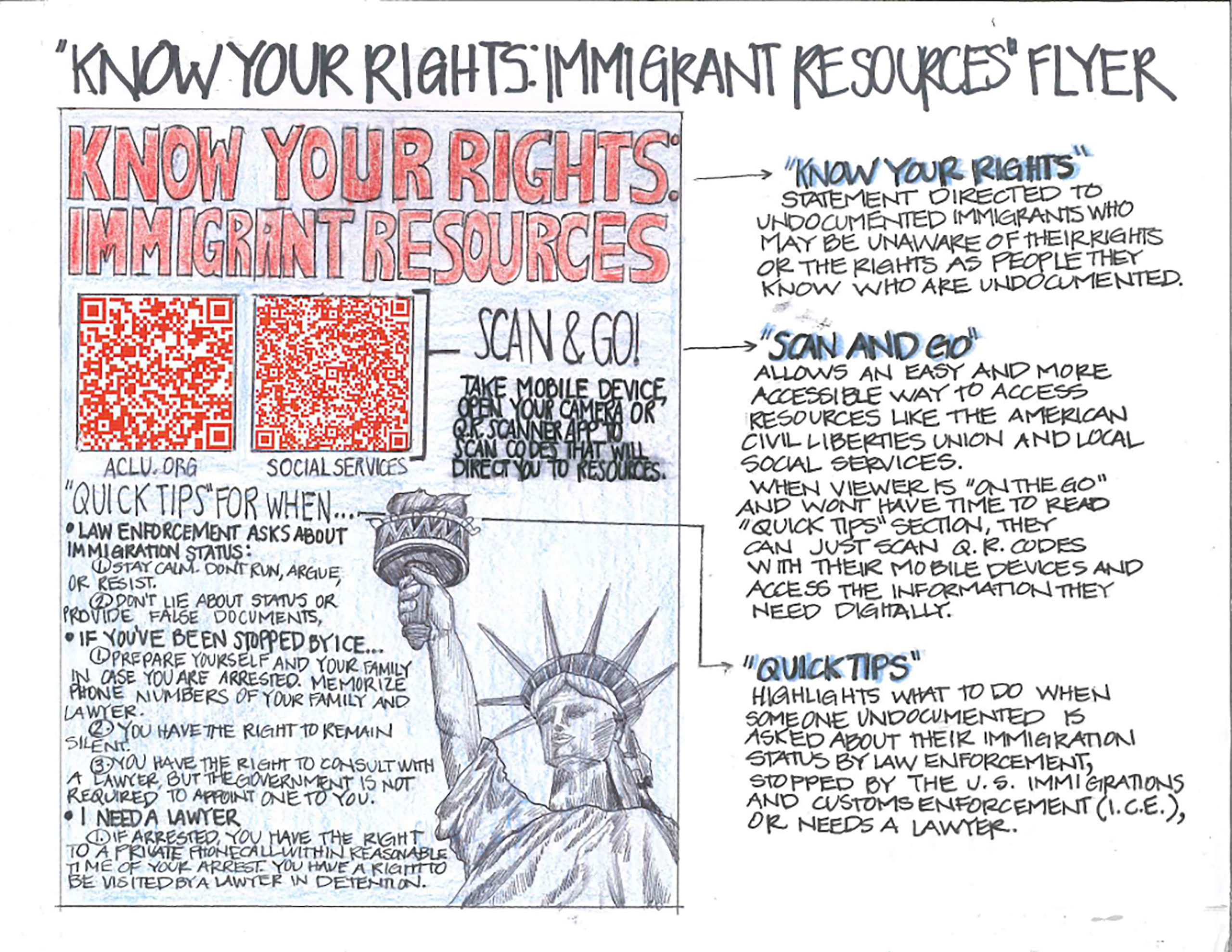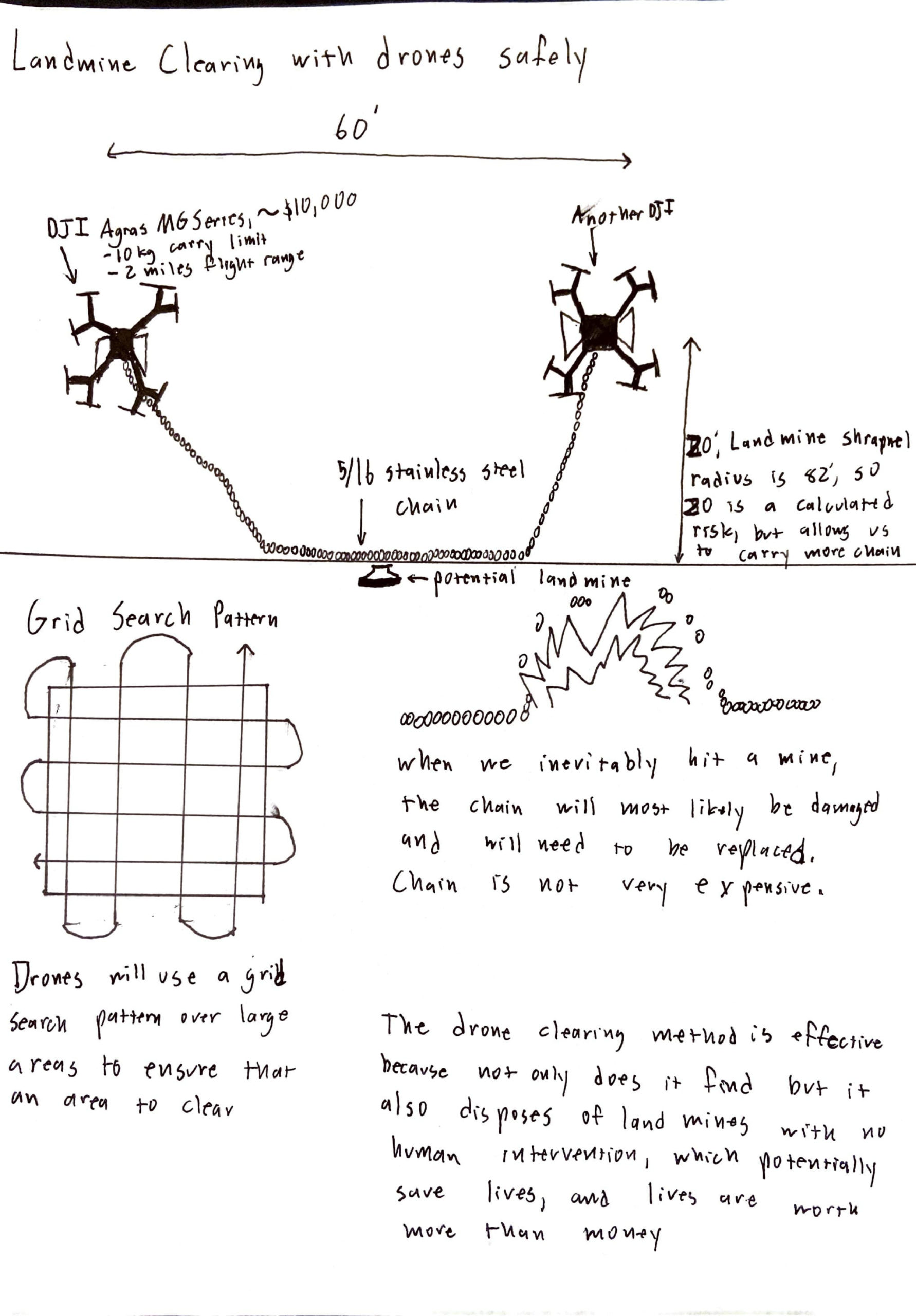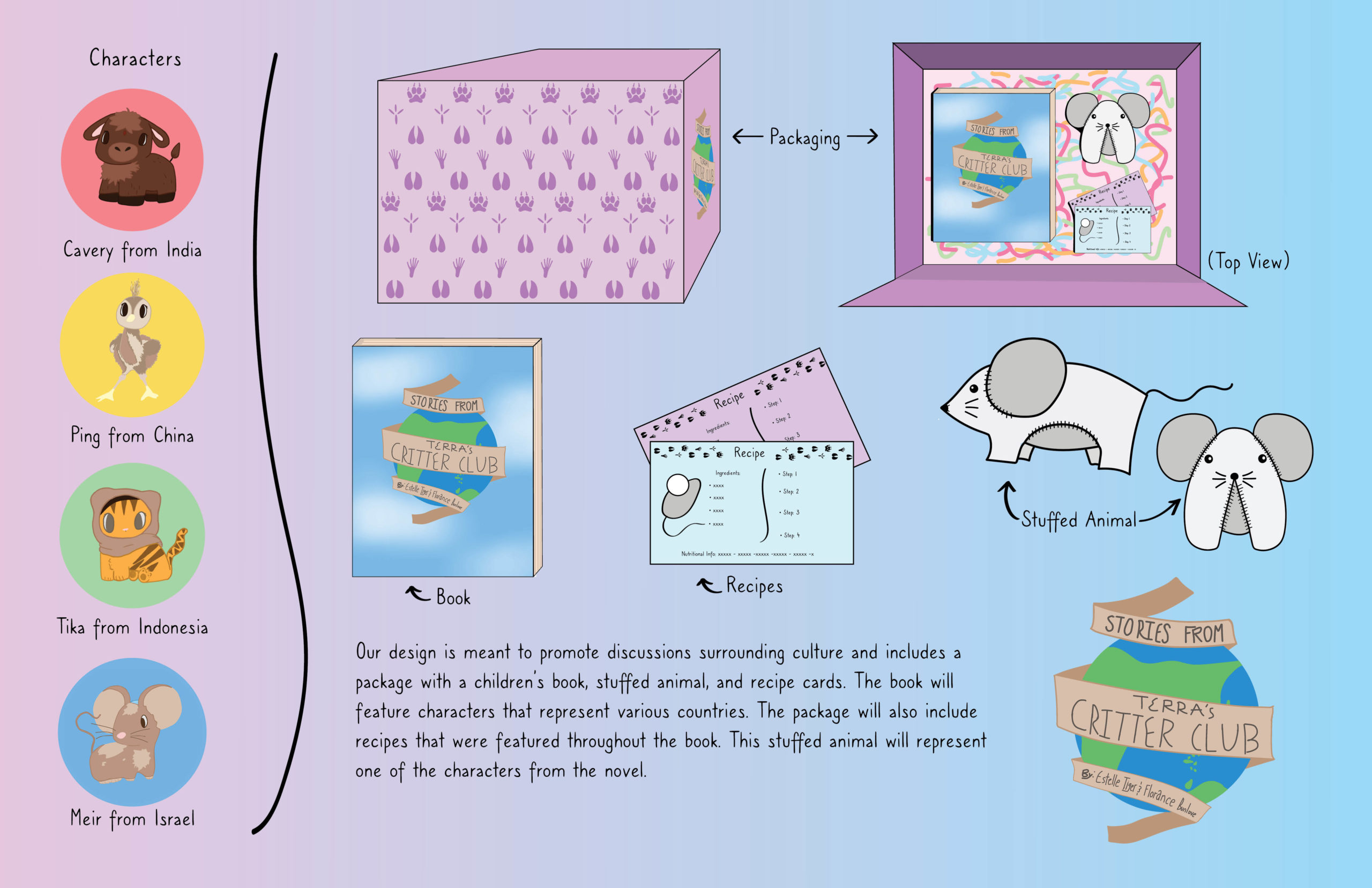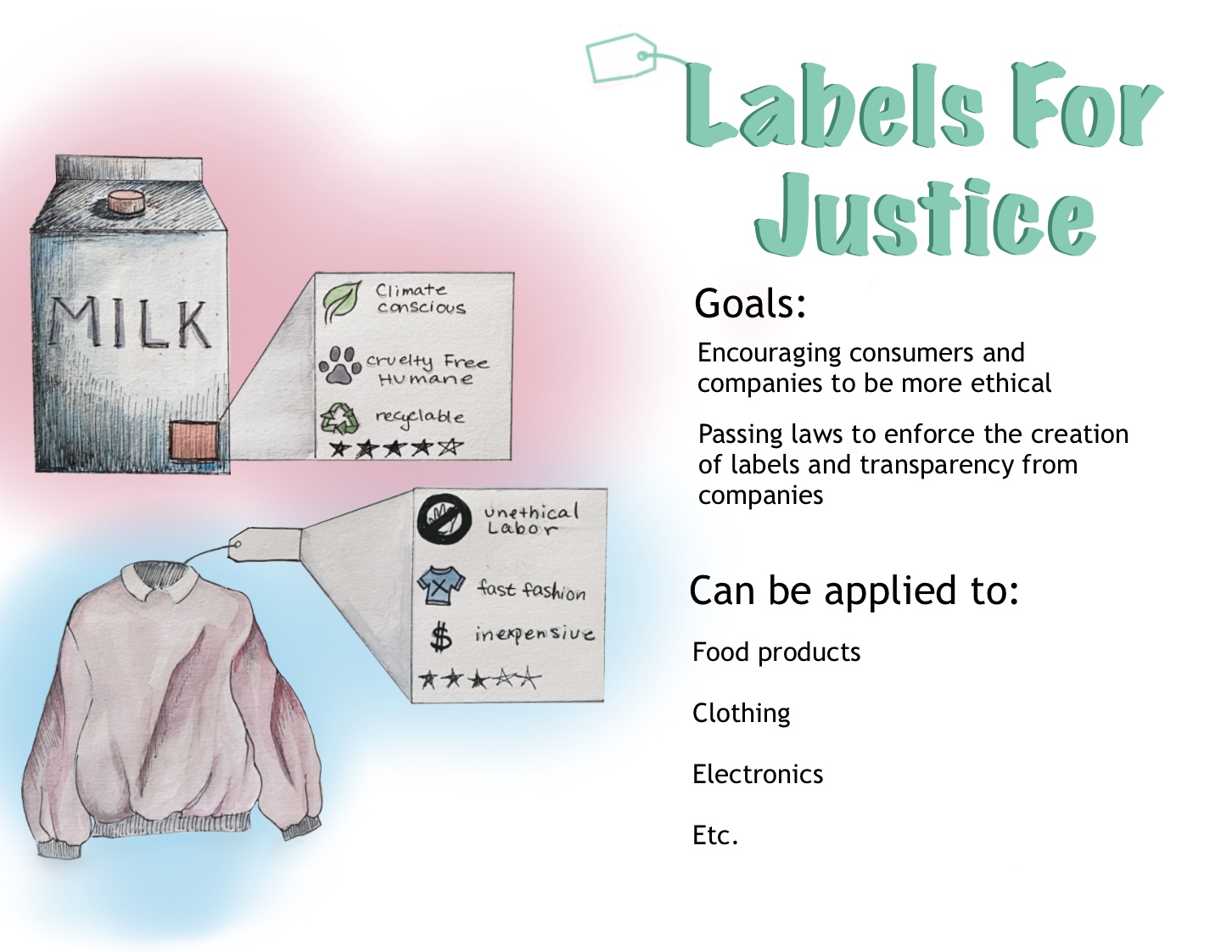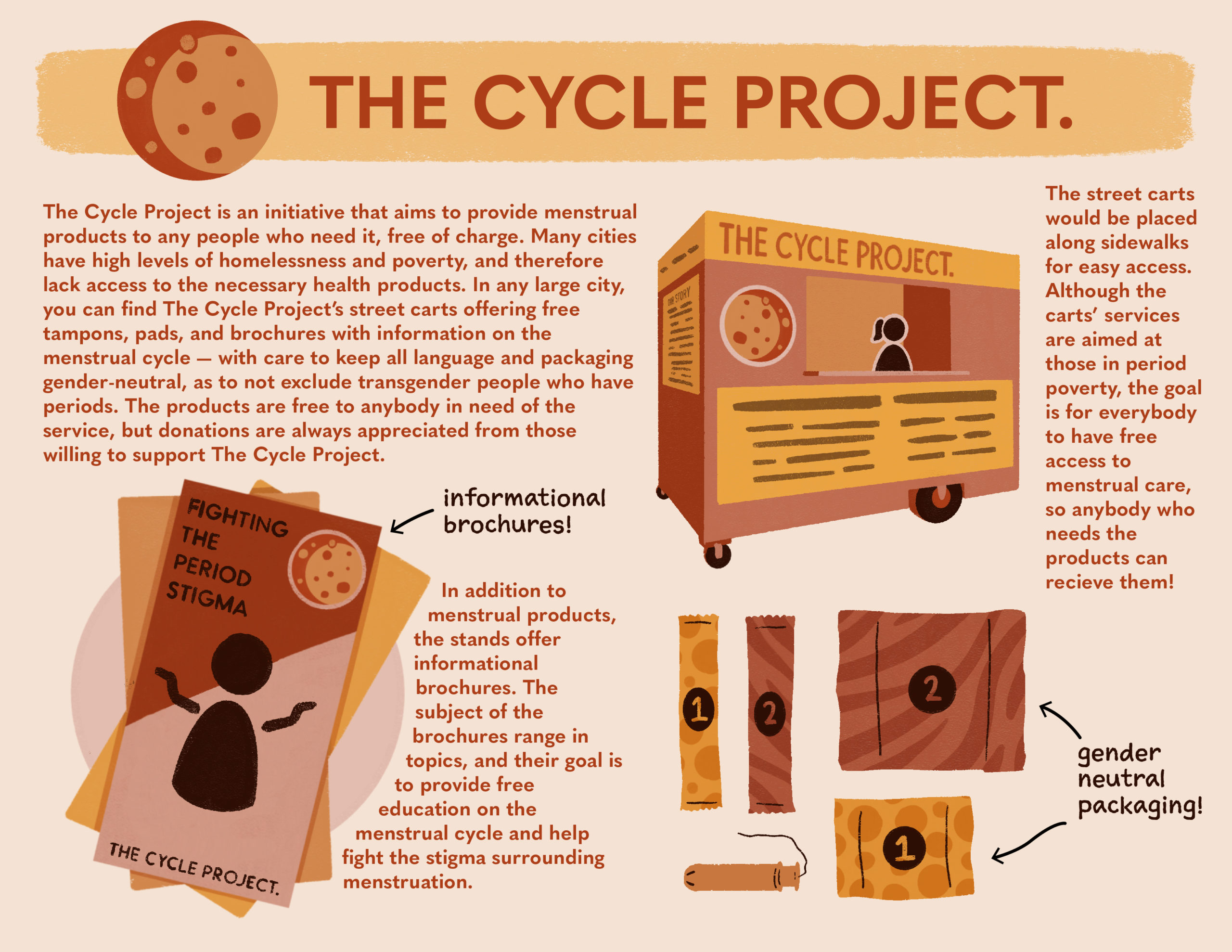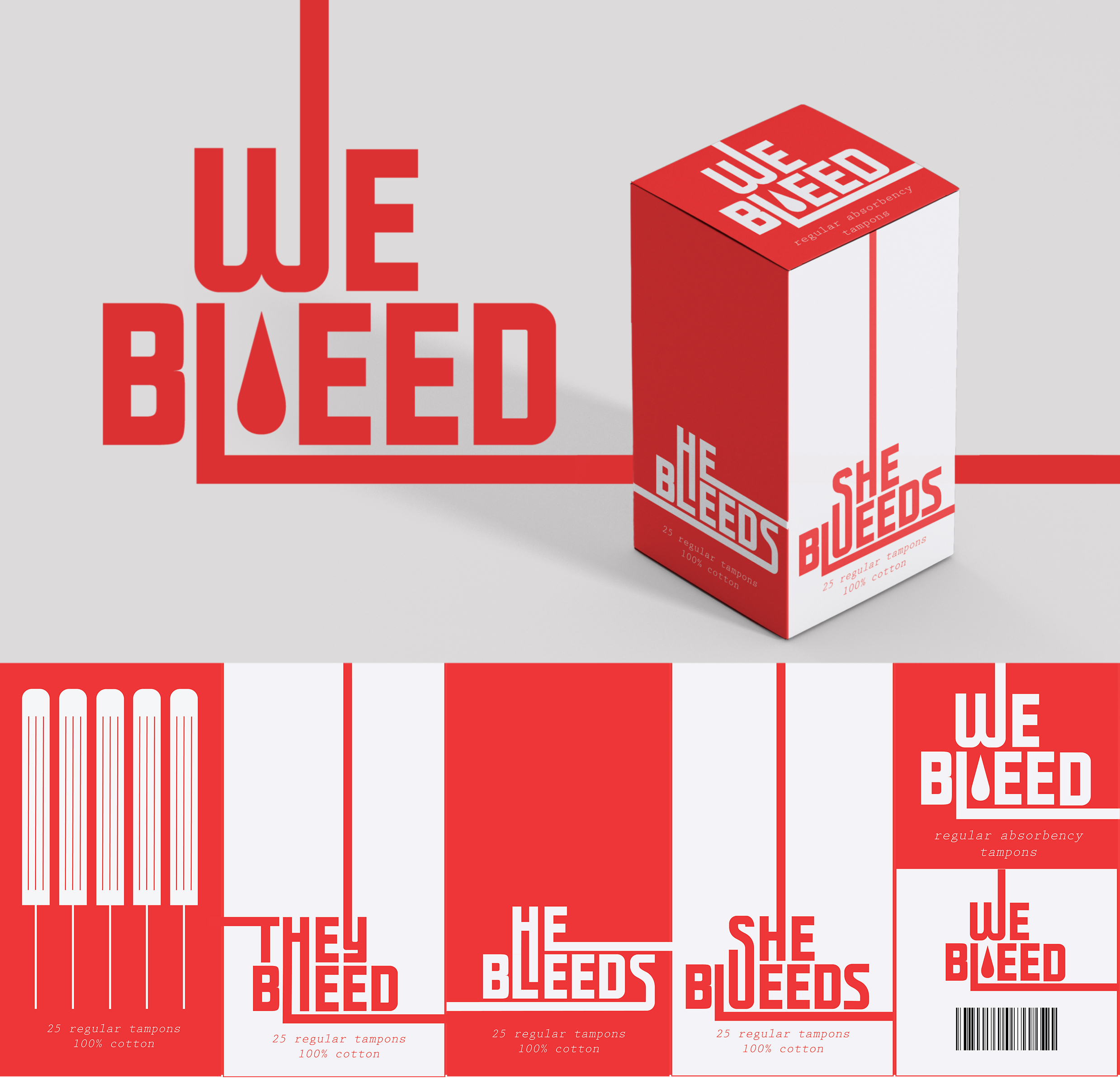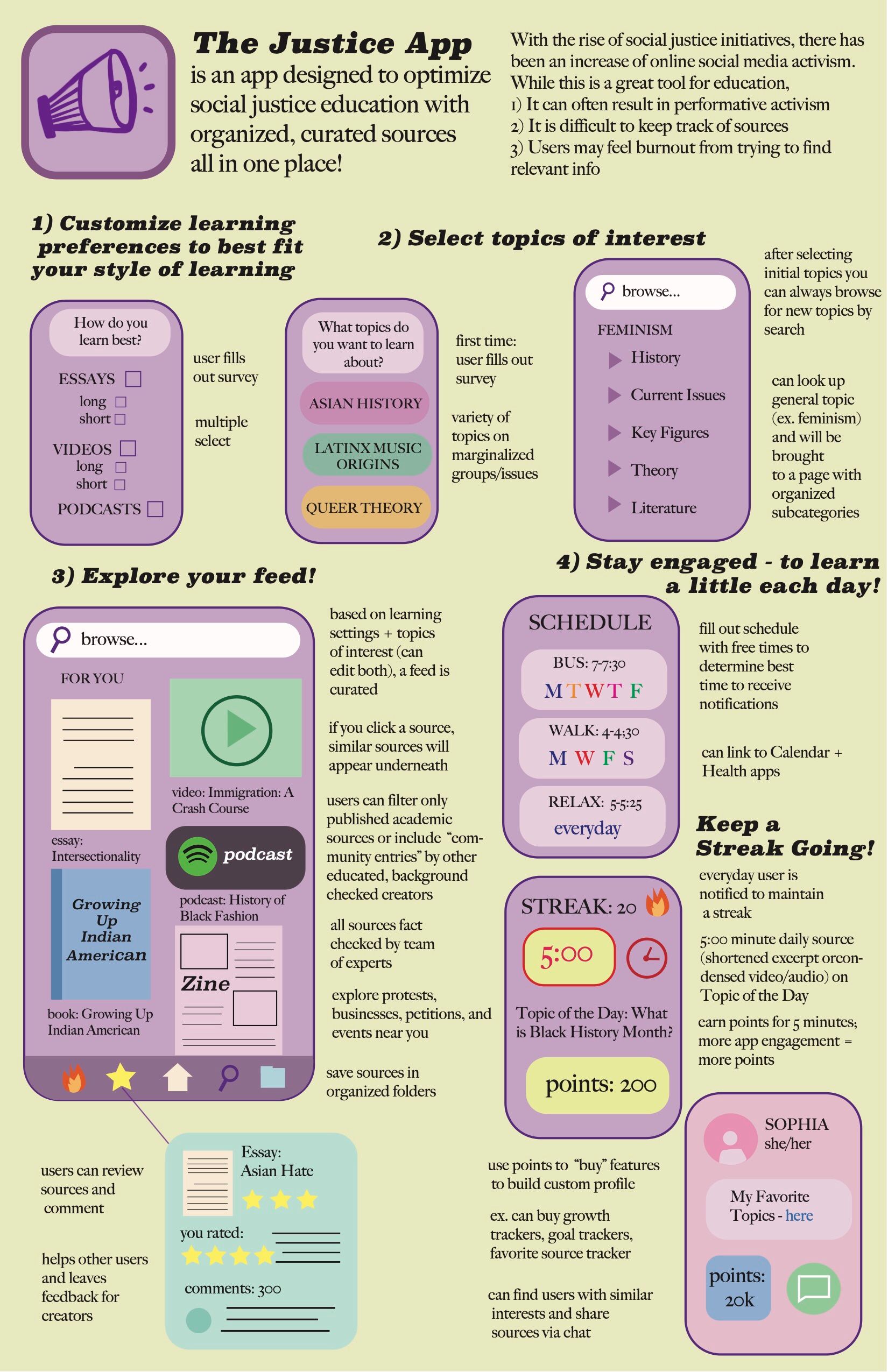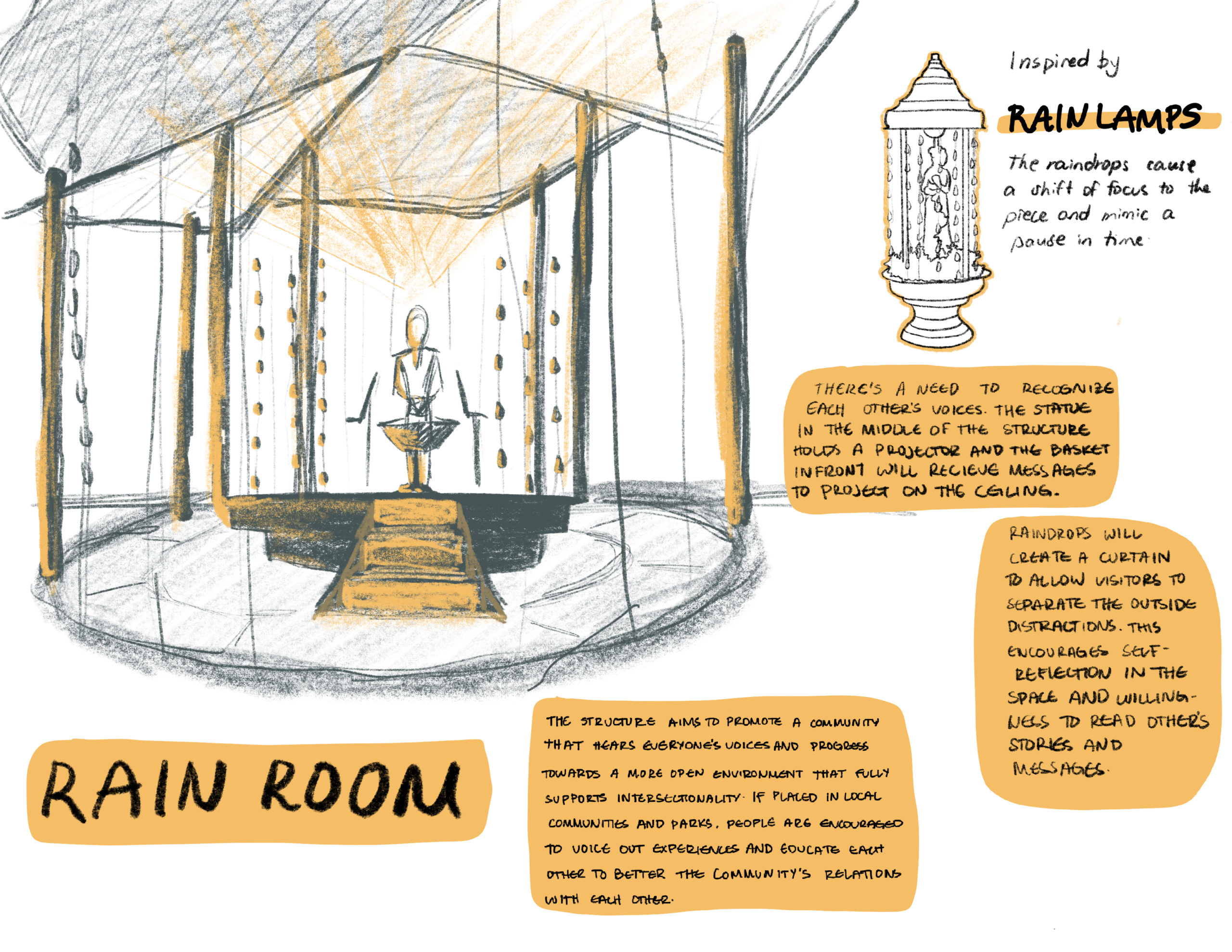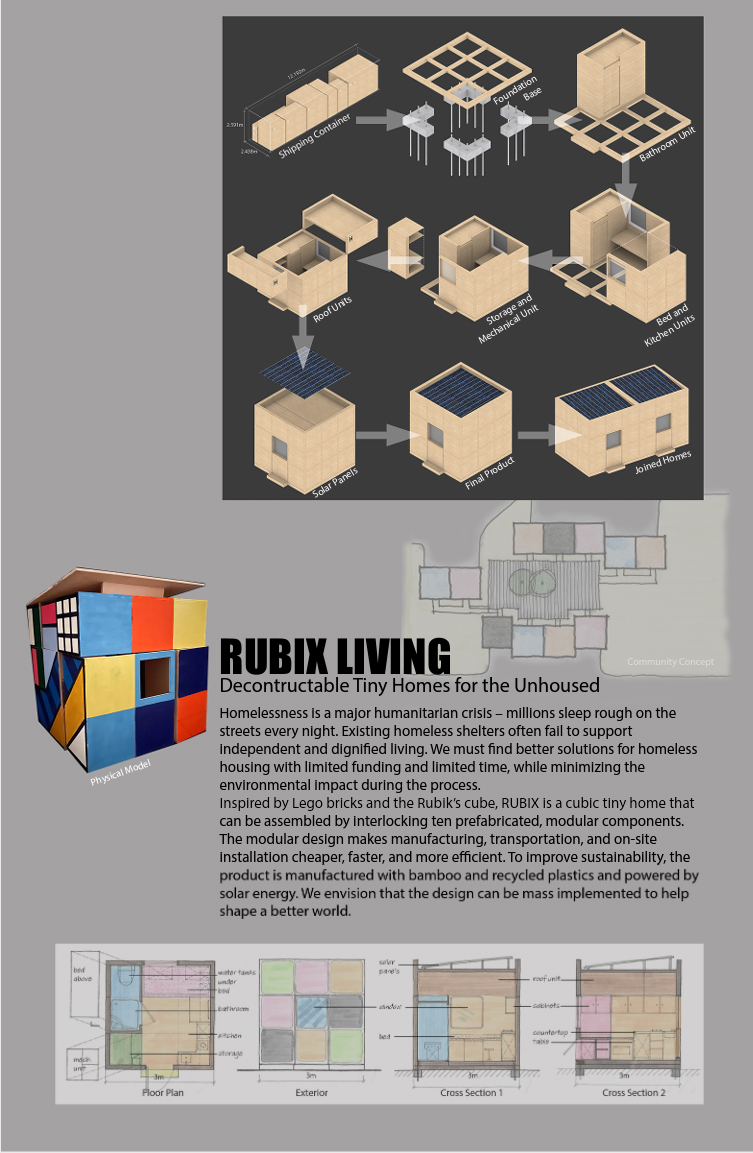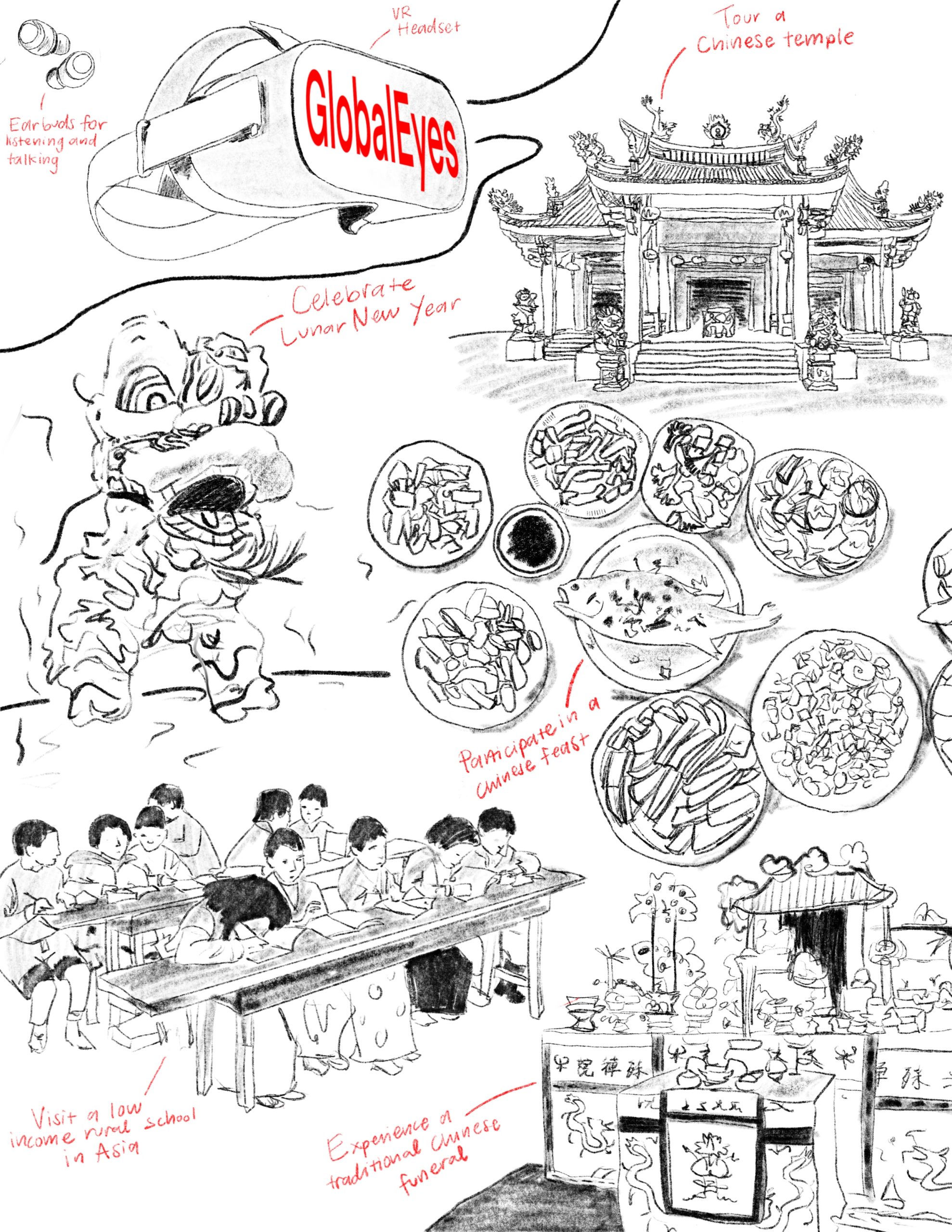Announcing the Winner! Copy
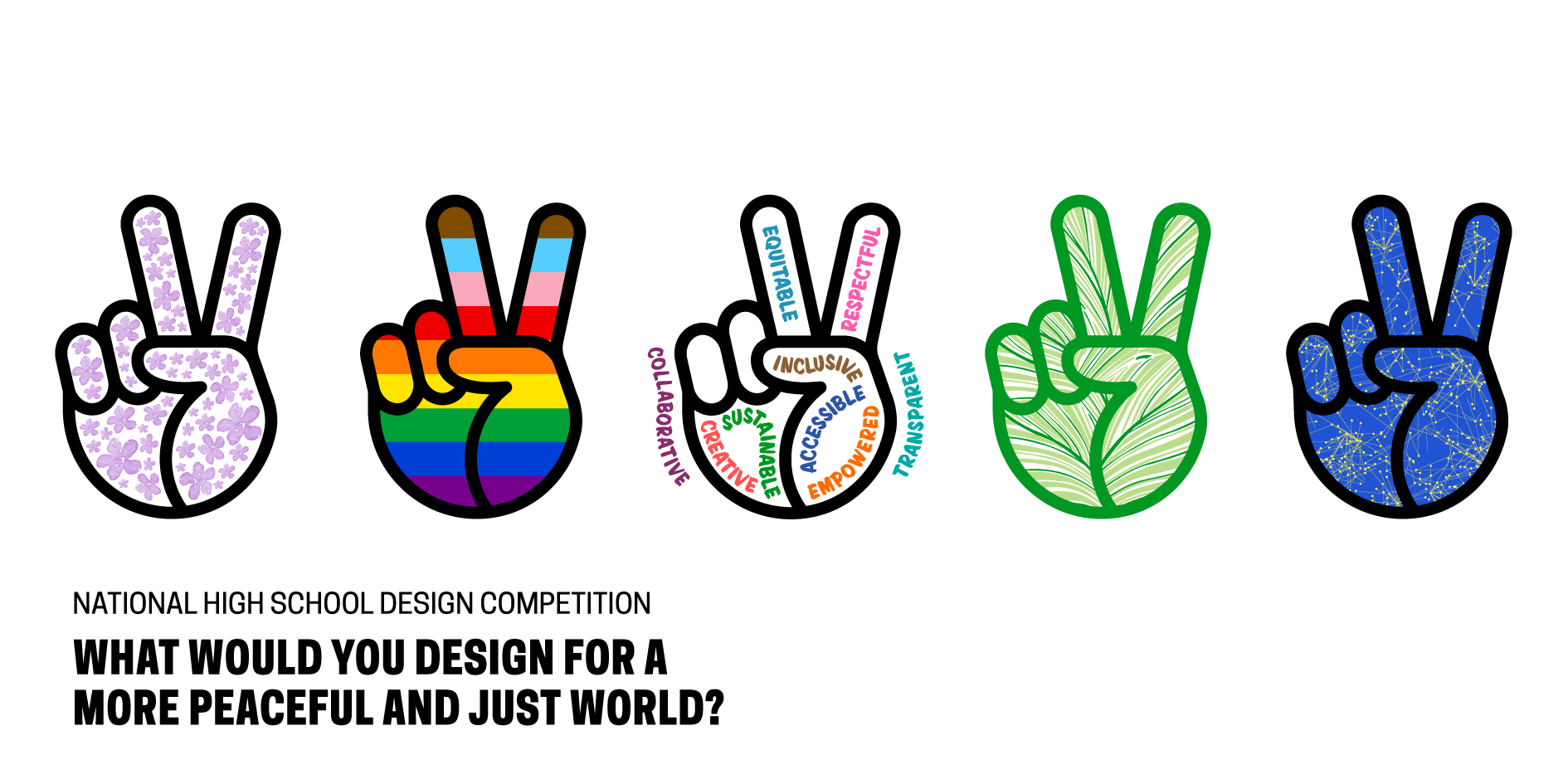
Announcing the 2022 winner: Erin Saya Ahn
Finalists Erin Saya Ahn, Bianca Arcayena, and Sohan Chunduru attended a virtual Judging Weekend on June 11–12 where they learned more about design and presented their design ideas to an esteemed panel of judges: Gray Garmon, Director of the Center for Integrated Design, University of Texas School of Design and Creative Technologies; Pragya Mishra, Creative Director and Associate Partner, Dalberg Design; Ronald Rael, Creative Partner, Rael San Fratello, and Eva Li Memorial Chair in Architecture, University of California Berkeley; Martha Rich, artist; Kim Robledo-Diga, Director of Learning and Audience Engagement, Cooper Hewitt, Smithsonian Design Museum; and Julia Tian, Creativity for All lead – Adobe philanthropy, Adobe, Inc.
Congratulations to sophomore Erin Saya Ahn (Roosevelt High School, Seattle, WA) for being named the winner of the 2022 National High School Design Competition. Her project, Aid To-Go, is a medical diagnosis brochure that enables easy doctor-patient communication, encouraging inclusivity as a step toward health equity and world peace. The brochure allows the patient to express their needs, regardless of linguistic or speech barriers by removing social, religious, and gender obstacles so the patient can get the care they need. Watch the presentations of the finalists and explore the projects of all the finalists and honorable mention recipients below.
MEET THE 2022 FINALISTS AND HONORABLE MENTIONS!
After reviewing 722 astounding entries from across the country, Cooper Hewitt is pleased to announce the finalists and honorable mentions for the 2022 National High School Design Competition, which challenged students to design a more peaceful and just world. The finalists will move on to the next stage of the competition full of inspiring mentoring activities including a virtual Mentor Weekend with lead mentor Kenneth Bailey, co-founder of the Design Studio for Social Intervention (ds4si), and Judging Weekend, where they’ll present their final designs to a panel of judges. Congratulations to the finalists and honorable mentions!
Erin Saya Ahn, grade 10
Roosevelt High School, Seattle, WA
Communication is incredibly fluid—we can share culture, art, and ideas using our languages and dialects. I want to reimagine the world of communication and healthcare by encouraging inclusivity as a step toward health equity and world peace. I want people to look past barriers and help others in a way that truly makes a difference. My visual medical diagnosis brochure enables easy doctor-patient communication. This brochure will allow the patient to express their needs, regardless of linguistic or speech barriers by removing social, religious, and gender obstacles so the patient can get the care they need. No matter what condition the patient has, I want the doctor to have the right information to make a diagnosis and provide the best care. This tool could also be adapted as a digital interface.
Bianca Arcayena, grade 12
Bergen County Academies, Hackensack, NJ
Teacher: Scott Lang
Lawful: A Court Game for All examines the balance of justice through law, how justice is decided, and how corruption can spread. The simplified game format helps students learn about how laws are used to create equity in society. It can also show how laws and people can be manipulated for the benefit of someone else. I want this design to show users the reality of the difficulty in achieving justice, as well as finding peace in the aftermath of court cases.
Sohan Chunduru, grade 12
La Jolla Country Day School, La Jolla, CA
Teacher: Dan Lenzen
The world is witnessing growing discord among people of different cultures, religions, and beliefs. This distrust is rooted in fear of the “other” and suspicions of the unknown. Enabling children to interact with peers from other countries increases cultural awareness and provides hope for a more peaceful and just future world. Whale Tales is a web application that allows children around the world to connect with each other for collaborative storytelling. Whale Tales exposes children to different cultures and teaches them the values of teamwork and cooperation, building a community of empathetic future global citizens.
Breanna Avalos-Villatoro, grade 10
Granada Hills Charter High School, Granada Hills, CA
Teacher: Narae Kim
Discrimination is a major issue in our world. Everyone is affected by it, especially indigenous, queer, and disabled people. It causes wars, racism, and, in some cases, murder. I imagine a world where people take a chance to view the world through others’ points of view. My design is an online video game that allows you to live a week through an oppressed person’s point of view. For example, you can live life as an undocumented immigrant, a disabled person, or a queer person. At the end of each day, you’re introduced to various foundations supporting people in the character’s situation. My design promotes understanding and peace between those oppressed and the rest of the world. It would allow all users to experience the hardships and discrimination so many people face every day. It is my hope that this idea would change at least one person’s perspective.
Caroline Berthin, grade 12
Design and Architecture Senior High, Miami, FL
Teacher: Eric Hankin
There is a need to disseminate credible information and resources regarding immigration policies in the United States to unauthorized immigrants who are unfamiliar with their rights and those who know of unauthorized immigrants. The “Know Your Rights: Immigrant Resources” poster serves to advocate for the rights of immigrants. It can be put up in public spaces such as schools, libraries, and other government buildings, or passed out to the public. It includes phone numbers, websites, local campaigns, and lawyer listings, all accessible through scannable QR codes that can be stored on users’ devices for easy access. The “Know Your Rights: Immigrant Resources” poster is a simple and sustainable solution for unauthorized immigrants that can be mass-produced, allowing for the easy dissemination of information.
Isabel Bozdogan, grade 12, and Camila Montero, grade 12
Design and Architecture Senior High, Miami, FL
Teacher: Eric Hankin
We have designed modules for a community-built art and design education center by adapting the South American indigenous tradition of “Minga,” which stands for collective labor done to promote social utility. The design would be implemented in low-income neighborhoods, which would partner with local architecture firms to help guide the project at local public schools. This exercise would consist of creating symmetrical folding rhombuses made out of wood framing, with joint connections that various communities will put together to create unique configurations. This program would take place within the structure that is built, creating an immersive experience. Our design encourages communal togetherness, allowing adults to revert to a child-like state of wonder and providing them with metaphorical and physical building blocks. This exercise would allow participants to be a part of the design process, learning first-hand about the values and principles of the architectural field.
Cristina Cruz, grade 11, and Conrad Parsons, grade 11
Granada Hills Charter High School, Granada Hills, CA
Teacher: Kani Kim
Our design is a simple yet effective method to dispose of landmines and clear landmine fields. It benefits the user because it allows them to clear the land around them of invisible death traps. We learned about the problem of landmines through movies and research. Our design consists of two large drones, a human operator, and a long chain heavy enough to trigger a landmine and strong enough to resist a blast. The two drones drag the chain across a field in a grid search pattern destroying landmines. The implementation of our design will save lives. Annually, landmines claim 5,000 lives and injure another 20,000. Landmines cannot be defused in most cases and are not marked, so they are invisible threats. They are remnants of wars and clearing them would bring us closer to a peaceful world.
Maile Gaines, grade 11, and Mindy Preston, grade 11
Communications High School, Wall Township, NJ
Teacher: Shelley Ortner
Religious and cultural intolerance are a widespread problem that only serve to create tension among communities. Our group observed this within our neighborhoods and identified the problem as a lack of education. Those that face this issue may be subject to bullying or violence because of this absence of understanding. Since intolerance is typically a product of ignorance, our idea is a package including a children’s book, a stuffed animal, and recipe cards that promote discussions about culture within families. Once you receive the preliminary package, you would then be given a pamphlet with information about a new character seasonally. By providing information about different cultures, we can foster an environment of inclusion. Implementing this idea with children ensures that they carry this thoughtfulness into adulthood. For more accessibility, our package will be available not only to parents, but also in schools and libraries.
Krystal Jiang, grade 10
Bergen County Academies, Hackensack, NJ
Teacher: Scott Lang
Improvement is necessary in corporate responsibility and the ethical decisions that consumers make. With this in mind, “shifting the markets” and pushing for a more ethical and sustainable economy is one of the best ways to work toward corporate justice. My design idea creates transparency between consumers and corporations. Requiring a labeling system makes consumers conscious of their buying decisions. The goal is to reduce the amount of unsustainable and unethical products in the marketplace, and to force companies to make better decisions when it comes to production. The impact is meant to ensure a sustainable economy. Using legislation to shift the markets sets up a system that moves us into a cleaner future. For everyday consumers, it will help to ensure that they are making healthy choices, not only for themselves, but also for the world.
Lucy Montalti, grade 10
Bergen County Academies, Hackensack, NJ
Teacher: Scott Lang
Currently, period products are viewed as commercial products and even taxed as a luxury item in some regions, despite being a necessary health product. The Cycle Project aims to redefine menstrual products as health products and ensure that all people with periods have access to the care and resources they need. The Cycle Project will introduce street carts in major cities, providing free tampons, pads, and informational brochures on menstrual health to those in period poverty, all with gender-neutral language and packaging. Any person in need of these products can walk up to a street cart and receive what they require. Tampon taxes and societal stigma hinder the ability of people with periods to receive the proper products and education they deserve. This initiative would fight these issues, provide people the products they need, and reimagine period care as necessary and destigmatized.
Eleanor Pimentel, grade 12
Moscow Senior High School, Moscow, ID
Periods are heavily gendered in our culture. For transgender and nonbinary people who are assigned female at birth, taking care of their reproductive health means being misgendered by doctors, bathroom signs, and even product packaging. Gender nonconforming people’s mental and physical health suffers because of this stigma. We Bleed is a tampon brand designed for a gender-inclusive audience. The key issues I identified with current products were gender language, hyper-feminine graphics, and lack of ingredient transparency. We Bleed addresses these issues through gender-inclusive language, androgynous red and white graphics, and ingredient labels. We Bleed offers transgender and nonbinary people gender-affirming period care so everyone can menstruate with dignity. The tampons would be distributed primarily to schools and homeless shelters, where they are most needed, especially empowering low-income teens for whom gender-affirming care is a challenge.
Sophia Shin, grade 11
Bergen County Academies, Hackensack, NJ
Teacher: Scott Lang
I am reimagining a world where social justice education is made easier and awareness is taken more seriously. This concept affects all people but specifically targets young social media users, allowing youth to learn and create change through technology in a more effective way. My design is an app that functions as a database for learning about social justice initiatives in easy, organized ways that are best designed for the user. It also encourages continual progress and education with streak engagement features. This design allows more people to become educated about social justice initiatives and prevents performative activism and burnout commonly associated with social media and online activism. It allows everyone to have a chance to learn about world issues in a way that best suits them, every day.
Thea Angella Tenorio, grade 12
Redwood High School, Larkspur, CA
My design addresses the struggle of amplifying the voices of marginalized communities. The lack of these voices perpetuates a society built to benefit those who are privileged, without making room for other people. I’ve experienced this marginalization and hope to create a better environment for others through education. The Rain Room is an open space containing a statue in the middle to receive messages and stories from different people that will then be projected on the structure’s ceiling. On the ground, viewers will see engravings of encouragement in different languages for inclusivity as well as other people’s experiences and stories. The raindrops before the main circle of the statue separates visitors from the outside world and allows them to be immersed in an educational experience to listen and read others’ stories and journeys. This is aimed to encourage more thoughtful and insightful views toward others, and kindness for community.
Renee Wang, grade 10
The Bishop’s School, La Jolla, CA
Millions of people worldwide are denied the basic human right to a home. The typical homeless shelter fails to cater to individuals’ needs because they do not support independent and private living. However, tiny homes offer comfortable living, permanent housing, a sense of community, and a path to rebuilding self-respect. I designed a self-sustainable, environmentally sensitive, and deconstructable tiny home for the unhoused. It uses solar panels and water tanks to be entirely off-grid, and it is built from recycled materials. Because it is deconstructable, it can be easily and cheaply manufactured, transported, and customized to individuals’ personal needs. My tiny homes provide more humanized alternatives to shelters for the unhoused. They can help people worldwide, from those who sleep rough, to refugees, to natural disaster survivors. Beyond providing physical shelter, they create safe communities that help underserved individuals reestablish self-respect, and they embrace people back into society.
Lake Wiesmayr-Cheuk, grade 11
Fiorello H. LaGuardia High School, New York, NY
Living in New York’s Chinatown, I’ve learned from personal experience that ignorance creates prejudice. I took the idiom, “Before you judge someone, walk a mile in their shoes,” as inspiration for my design. In order to empathize with another person it is helpful to understand their experiences, challenges, and culture. GlobalEyes is a virtual-reality program that brings users to different cultural experiences. Chinese culture is one of many available in GlobalEyes. Each cultural experience provides explanations, immersion, and stories of traditional landmarks and celebrations. Real people from each location will interact with the user, supplying more moving and personal encounters. Using a VR headset provides a realistic sensory experience that places the user into a culture they wouldn’t have had the chance to experience otherwise. Users become immersed in how others live, and engage in unique interactions with the hope that they will gain more respect for the culture and its people.
